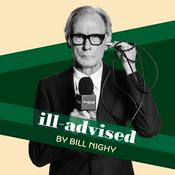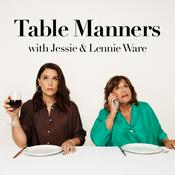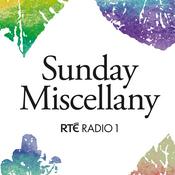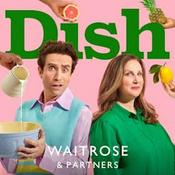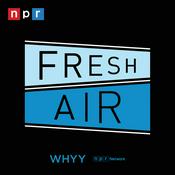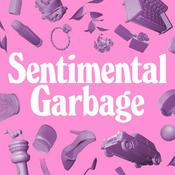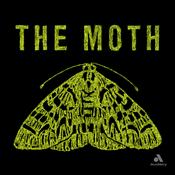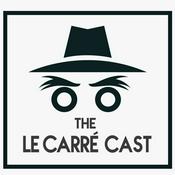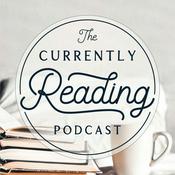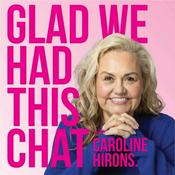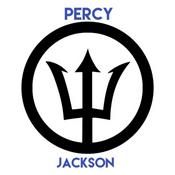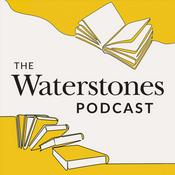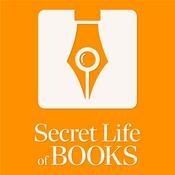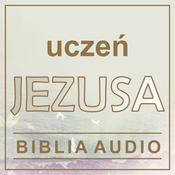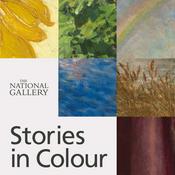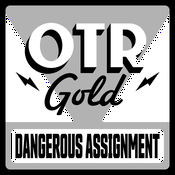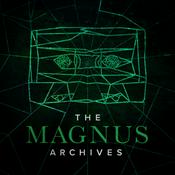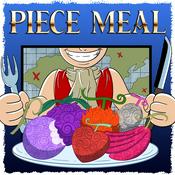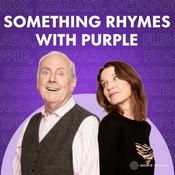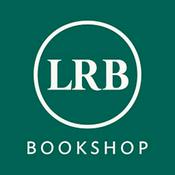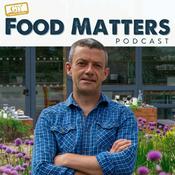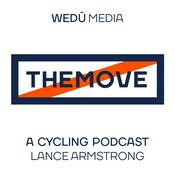73 episodes

Introducing: Series Three of A History of Coffee
29/12/2025 | 2 mins.
We’re back with more stories about the tiny psychoactive seed that changed the world and continues to shape our lives today. Is it possible to follow the story not just to Ethiopia, not just to a single town, but all the way back to one tree? We’ll uncover the uncomfortable history of Guatemala — a story about who inherited the rich volcanic soil, and who was forced to work it. We explore what happens when our worst nightmare comes true: coffee disappears from the shelves. What did people brew instead? Was any of it actually drinkable? And we tell the story of how coffee can shape the massive port city of Hamburg, and how Hamburg then went on to shape the global coffee world. If we want to make coffee a more equitable industry that’s also kinder to the environment, a place to start is understanding the stories and systems that put the coffee into your cup this morning. Press the ‘Subscribe’ button so you don’t miss future episodes. A History of Coffee is a collaboration between documentary maker James Harper of the Filter Stories coffee podcast and Jonathan Morris, Professor of History and author of ‘Coffee: A Global History’. Follow us on Instagram! Jonathan Morris @coffeehistoryjm and James Harper @filterstoriespodcast. This free educational content was made possible with the support of Mahlkönig, manufacturers of world-class grinders for 100 years. Subscribe to The Science of Coffee podcast Join me at World of Coffee Dubai, 18-20 January. Grab your tickets here. What does the Marco MilkPal look like to you? WALL-E? Something Steve Jobs would be proud of? Check it out here.

Coffee Quality, Part 3: When the “quality” myth hits the farm
08/12/2025 | 30 mins.
For twenty years, the 2004 cupping form profoundly shaped the specialty coffee world. But on the hillsides of coffee farms, some of the form’s byproducts have been disadvantaging producers. In this episode, we follow two producers whose lives collided with the myth of universal quality. These stories reveal how a single idea of “quality” can close doors for the people with the least power in the supply chain. The new coffee evaluation form, the CVA, is still young, and with any luck it will keep evolving. I hope for a form that can empower even the smallest producers. Please support my work directly at Ko-fi.com/FilterStories Other ways you can help: Leave a 5 star rating on Spotify Follow me on Instagram and tag me in an Instagram story Write a review on Apple Podcasts Discover how I make these Filter Stories episodes by subscribing to my Substack newsletter Go deeper into the story of quality: The original Filter Stories episode about Murray Cooper in Ecuador, Firefly Specialty Coffee Association's new Coffee Value Assessment 2004 cupping form from the Specialty Coffee Association of America SCAA Coffee Cuppers Handbook (4th edition, 2011) Kenneth Liberman's book, "Tasting Coffee: An Inquiry into Objectivity" SCA's video series on the CVA presented by Peter Giuliano Join me at World of Coffee Dubai, 18-20 January. Grab your tickets here. What does the Marco MilkPal look like to you? WALL-E? Something Steve Jobs would be proud of? Check it out here.

Coffee Quality, Part 2: How “quality” became a myth
08/12/2025 | 25 mins.
If you ask two specialty professionals what makes a high-quality coffee, you’ll likely get a surprisingly consistent answer: clean, sweet, juicy, bright. To an outsider, they would be forgiven for thinking coffee quality is universally defined. But the truth is more sober. In this episode, we examine how a simple cupping form helped create a universal idea of quality. We then look at the evidence that, in fact, it’s just the personal preferences of a small group of people masquerading as universal quality. Please support my work directly at Ko-fi.com/FilterStories Other ways you can help: Leave a 5 star rating on Spotify Follow me on Instagram and tag me in an Instagram story Write a review on Apple Podcasts Discover how I make these Filter Stories episodes by subscribing to my Substack newsletter Go deeper into the story of quality: 2004 cupping form from the Specialty Coffee Association of America SCAA Coffee Cuppers Handbook (4th edition, 2011) Cup of Excellence cupping form Kenneth Liberman's book, "Tasting Coffee: An Inquiry into Objectivity" SCA's video series on the CVA presented by Peter Giuliano Join me at World of Coffee Dubai, 18-20 January. Grab your tickets here. What does the Marco MilkPal look like to you? WALL-E? Something Steve Jobs would be proud of? Check it out here.

Coffee Quality, Part 1: The birth of specialty coffee flavours
08/12/2025 | 23 mins.
For the longest time, coffees were dull and bitter. But then a small group of pioneers changed the world. In this episode, we travel back to the 1960s and ’70s to meet the trailblazers who realised coffees could taste distinctive: sweeter, brighter, cleaner. We discover how their personal preferences became a movement, then a form, and eventually a global definition of “quality”. Please support my work directly at Ko-fi.com/FilterStories Other ways you can help: Leave a 5 star rating on Spotify Follow me on Instagram and tag me in an Instagram story Write a review on Apple Podcasts Discover how I make these Filter Stories episodes by subscribing to my Substack newsletter Go deeper into the story of quality: Specialty Coffee Association's new Coffee Value Assessment 2004 cupping form from the Specialty Coffee Association of America SCAA Coffee Cuppers Handbook (4th edition, 2011) Michael Sheridan of CQI discussing the inter-organisational politics behind the Houston Expo announcement on Lee Safar's Map It Forward podcast Join me at World of Coffee Dubai, 18-20 January. Grab your tickets here. What does the Marco MilkPal look like to you? WALL-E? Something Steve Jobs would be proud of? Check it out here.

How specialty coffee woke up to water’s role in flavour
28/7/2025 | 25 mins.
For the longest time, the coffee community only cared about water’s impact ruining espresso machine boilers and kettles. But what about water’s impact on coffee flavour? In this episode, I tell the story of how the specialty coffee community came to understand water chemistry: the pioneering work of the computational chemist Christopher Hendon and British roaster Maxwell Colonna-Dashwood, the genesis of the SCA’s Water Quality Handbook, and where we are today understanding the impact of minerals on our water. I strongly recommend listening to the two episodes before this one first Getting great water for coffee, step-by-step & The two ingredients in water that ruin your coffee, and the ancient story behind them Please spread the word about The Science of Coffee! Leave a 5 star rating on Spotify Follow me on Instagram and tag me in an Instagram story Write a review on Apple Podcasts Discover how I make these Filter Stories episodes by subscribing to my Substack newsletter Want to go deeper into water chemistry? Read the SCA’s Water Quality Handbook BWT White Paper on the effects of magnesium (German) Christopher Hendon’s Instagram where he’ll announce his new version of his book, Water for Coffee Do an online Certificate of Advanced Studies at the Coffee Excellence Centre Season 3 of The Science of Coffee is made possible by these leading coffee organisations: The Coffee Quest | BWT | TODDY | Algrano | Probat Note: this is a reworked version of my 2022 episode Water for Brewing Coffee, including portions of my 2024 episode How to think like a scientist, part 2. Join me at World of Coffee Dubai, 18-20 January. Grab your tickets here. What does the Marco MilkPal look like to you? WALL-E? Something Steve Jobs would be proud of? Check it out here.
More Arts podcasts
Trending Arts podcasts
About Filter Stories - Coffee Documentaries
Listen to Filter Stories - Coffee Documentaries, ill-advised by Bill Nighy and many other podcasts from around the world with the radio.net app

Get the free radio.net app
- Stations and podcasts to bookmark
- Stream via Wi-Fi or Bluetooth
- Supports Carplay & Android Auto
- Many other app features
Get the free radio.net app
- Stations and podcasts to bookmark
- Stream via Wi-Fi or Bluetooth
- Supports Carplay & Android Auto
- Many other app features


Filter Stories - Coffee Documentaries
download the app,
start listening.
